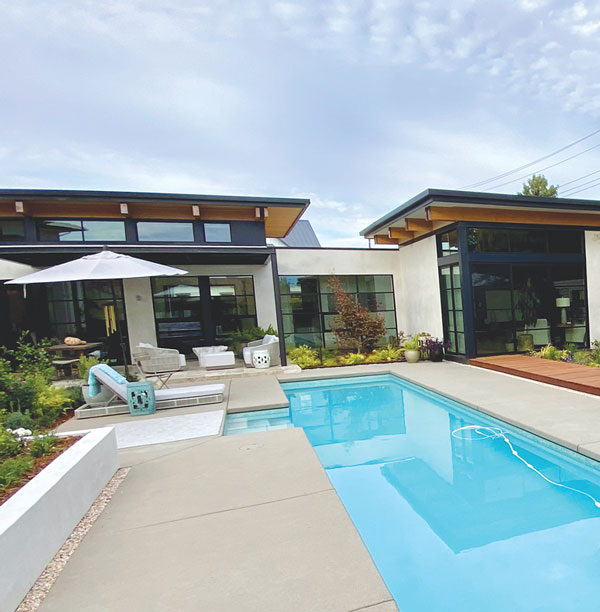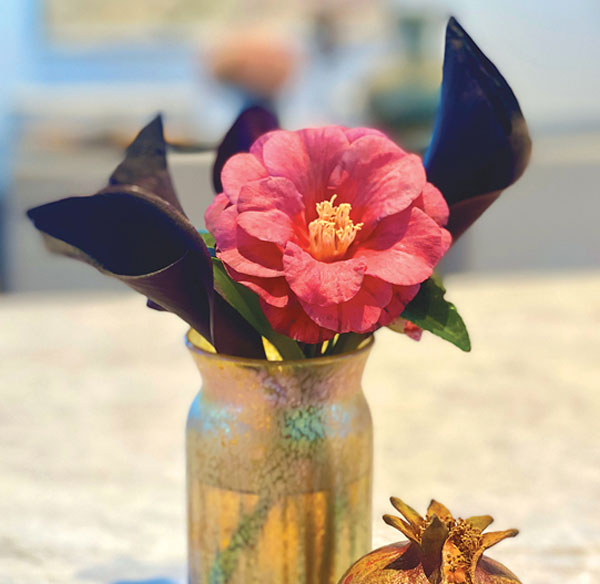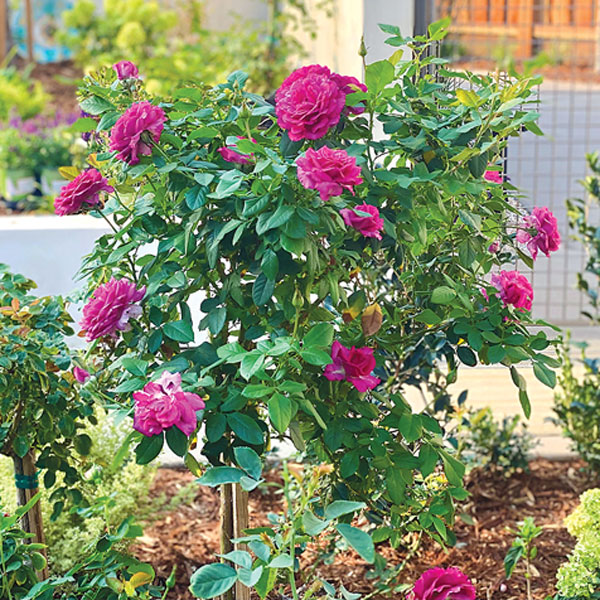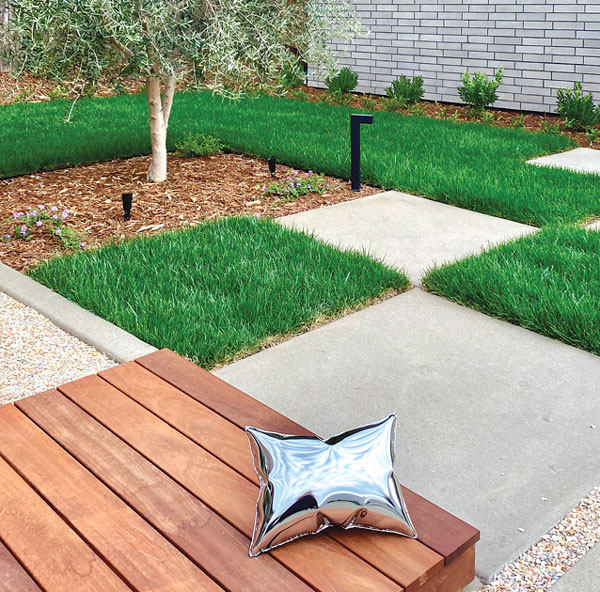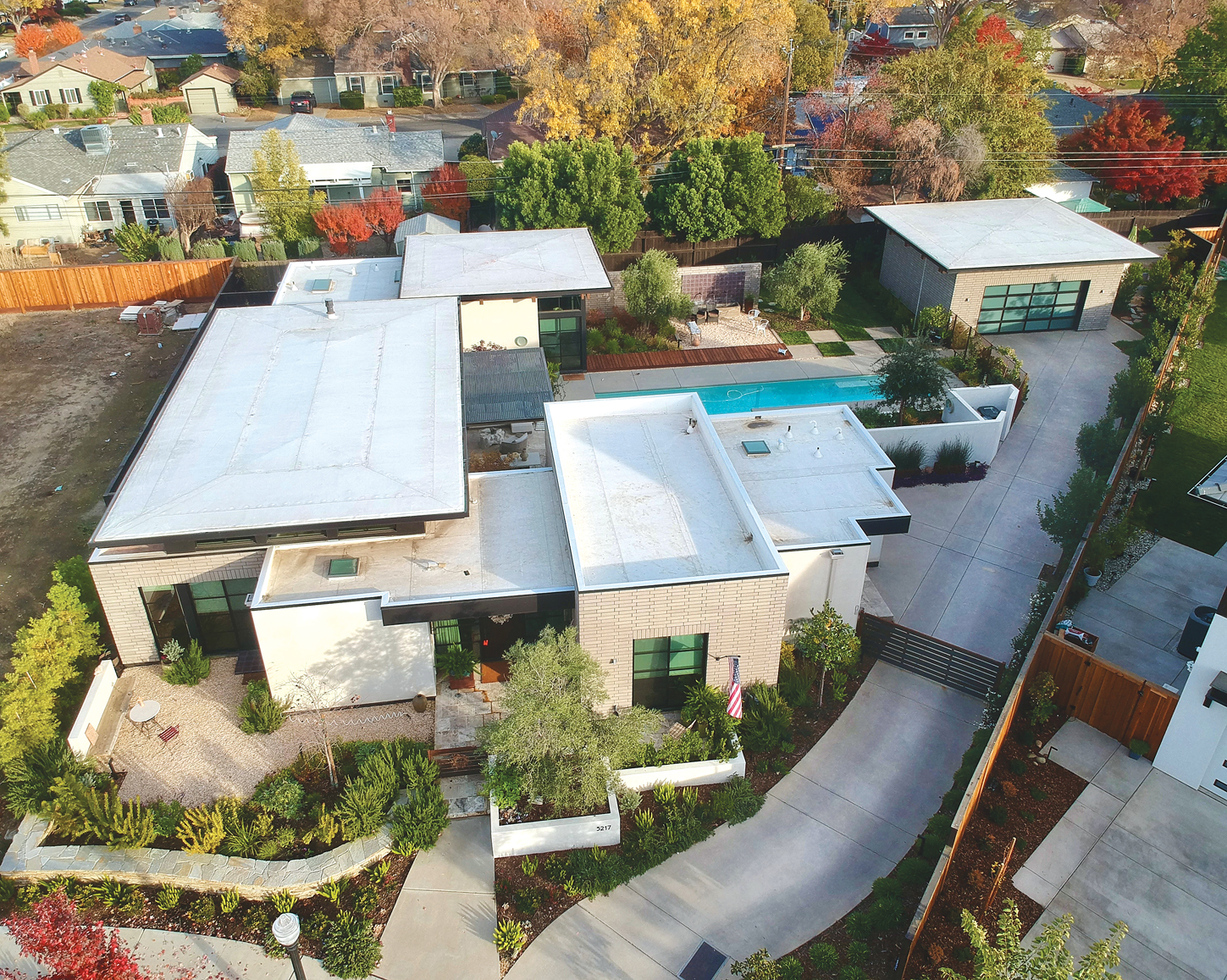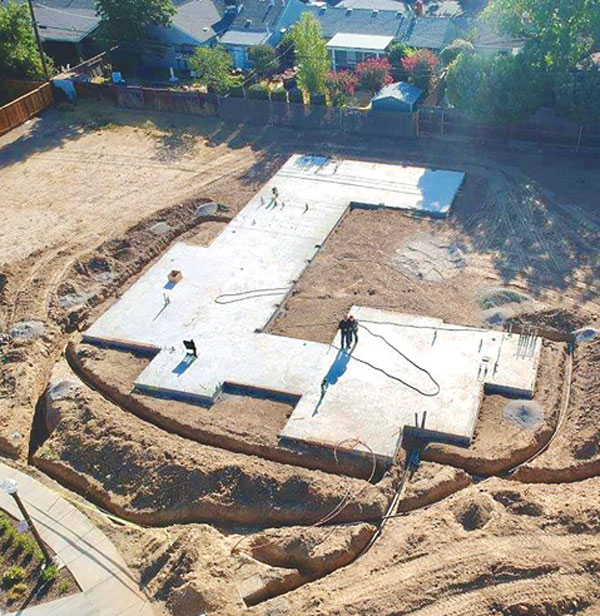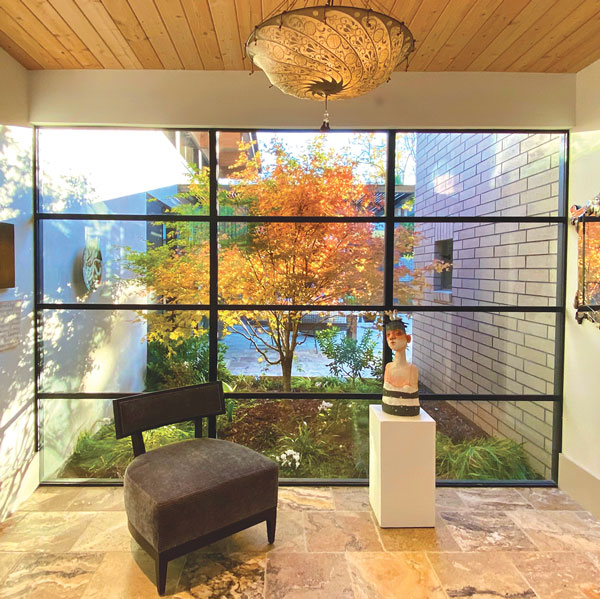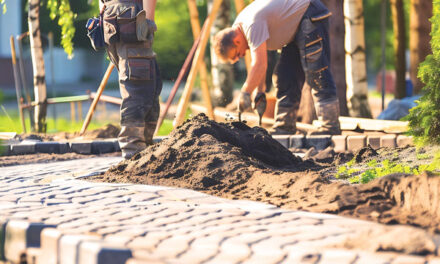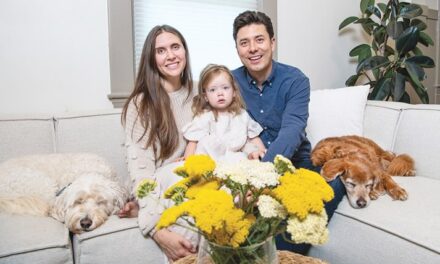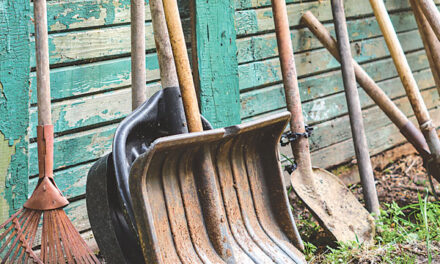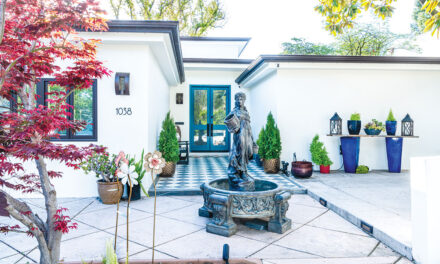Buried beneath a parking lot, compressed and denied sunlight and water for decades, this dirt presents a gardening horror story to send chills down a rake handle.
In the 1930s, Sutter Memorial Hospital was constructed at 5151 F St. The buildings were demolished in 2016, the land redeveloped and christened Sutter Park.
Cecily and Jim Hastings purchased a quarter acre lot and built a spectacular contemporary home where the hospital’s paved, overflow parking lot once existed. The home was designed by their friend and former neighbor Tyler Babcock, AIA.
“Of all the things I considered in purchasing a lot, probably the last thing was the soil,” says Cecily Hastings, publisher of Inside Sacramento. “Ours was effectively dead. When the contractor started digging for the foundation, she said, ‘Your landscaping budget has got to go up because this is just the worst soil.’”
The couple moved into the home a year and a half ago. Floor-to-ceiling glass floods the interior with light and allows a seamless blend of modern architecture and organic vignettes. It’s a marriage of beauty and privacy, a modern organic union.
“The organic part is being able to stand in a room and look out and see foliage and vignettes,” Hastings says.
That marriage of indoors/outdoors was literally on the rocks (and clay) when landscaping began.
The couple previously owned homes and gardens near McKinley Park, where shaded yards favor plants that prefer a leafy canopy to defend against summer heat.
Her shade-loving plants also benefited from grand soil, a jarring departure from the moonscape encountered at the Sutter Park lot.
The old hospital parking lot, plus abuse from heavy equipment and home building, squeezed the life from the land.
Hastings described it as rocks, heavy clay and hardpan, a monumental challenge for a new garden. Healthy soil is the indispensable life blood of all gardens.
Hastings is an experienced interior designer but sought guidance in creating a new garden. Landscape architect Bill Roach was called upon. Once raised planters, walkways and other hardscape elements were completed, she was confronted with improving the soil and selecting plants for a completely different microclimate.
The lot had no mature trees or any trees at all. It was exposed to sunlight and drying winds.
“When we moved in, we had not done one thing outside the house,” says Hastings. “Not one thing. Not one fence. Not one piece of concrete. Not one plant.”
Living in the home prior to landscaping allowed her to visually design the view outdoors from each room. She shifted into garden nerd mode and studied regenerative agriculture techniques, which basically transforms awful soil into fertile, revitalized soil teeming with microbial good guys.
“I started looking at what makes good soil,” she says. “My mission was to regenerate the poor soil.”
Landscaping crews hauled off truckloads of bad soil. Using backhoes and jackhammers, they removed about 6 inches from planting beds and backfilled with a topsoil/compost blend.
She purchased and introduced earthworms and released beneficial insects, such as lady beetles, and bird feeders to entice more birds. Mature trees, including fruitless olives and Japanese maples, were planted with hopes tree roots would eventually penetrate and break up the clay.
Drip irrigation waters the entire property, except a tiny square of grass next to the garage where the couple’s two Hungarian vizslas frolic. Hastings purchased an old-school push mower, but when she attempted to mow, the cutting reel clogged. A gardener now mows weekly.
Gardens are never finished, but her current garden boasts layers of texture, color and fragrance. Roses, lilacs, an espaliered apple tree, a thorny Australian finger lime, boxwoods, container plantings and herbs form eclectic groupings. Vegetables thrive in galvanized livestock water troughs.
“In architecture and interior design, you design it once and it pretty much stays that way,” she says. “The garden changes every day, every month, every year. Gardening is the beauty, the growth, the improvement. I like to make things better. So I made this little plot of earth.”
Dan Vierria is a University of California Cooperative Extension Master Gardener for Sacramento County. He can be reached at masterg29@gmail.com. For answers to gardening questions, contact the UCCE Master Gardeners at (916) 876-5338, email mgsacramento@ucanr.edu or visit sacmg.ucanr.edu. Follow us on Facebook, Twitter and Instagram: @insidesacramento. Photography courtesy of Cecily Hastings.



